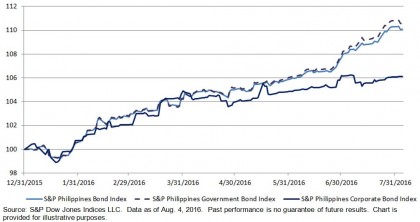Bankers and corporate treasury managers may be facing the challenge of parking excess cash for a short period, maybe overnight, to earn some income or interest without compromising the security of the funds. Similarly, there are many banks and corporates that need cash in the short term at the lowest possible rate. While there are many possibilities (the call money market or repo market, commercial paper, etc.) each comes with certain advantages and disadvantages. In India, various banks, financial institutions, and corporates are increasingly using the collateralized borrowing and lending obligation (CBLO) rate to lend or borrow money, for periods ranging from overnight up to one year (although the majority of trades are overnight).
What Is the CBLO Rate?
Unique to India, the CBLO rate facilitates the borrowing and lending of funds with G-sec as collateral. It is also considered secure, as Clearing Corporation of India Ltd. (CCIL) is the central counterparty to all trades and guarantees settlement of CBLO trades. Also, all trades are executed through electronic order book and are anonymous. One of the distinguishing factors of CBLO is “tradability,” which means it allows the lender or borrower to reverse the position. For example, in the case of a borrower, he can repay a loan before the expiry of the term. It is no small wonder that CBLO has evolved as one of the most liquid money market instruments in India.
Currently, the collateralized market, CBLO, has become highly liquid and is dominating the short-term market in terms of volume of transactions. Over the last eight years, the trading volume of CBLO segment has become higher than the combined trading volume of overnight call and market repo markets. Exhibit 1 gives the historical trading volume of the short-term market in India.
| Exhibit 1: Historical Trading Volume | ||||
| Period | Call | CBLO | Market Repo | Overnight Total |
| 2008 | 30,471 | 86,880 | 29,892 | 147,243 |
| 2009 | 22,287 | 140,748 | 47,193 | 210,228 |
| 2010 | 21,854 | 130,138 | 31,075 | 183,067 |
| 2011 | 28,490 | 118,978 | 27,473 | 174,941 |
| 2012 | 36,190 | 112,009 | 33,057 | 181,256 |
| 2013 | 34,871 | 166,962 | 50,370 | 252,203 |
| 2014 | 28,827 | 159,835 | 51,902 | 240,564 |
| 2015 | 27,739 | 164,823 | 63,998 | 256,561 |
| Up to July 31, 2016 | 21,647 | 90,729 | 51,595 | 163,971 |
Source: Reserve Bank of India (www.rbi.org.in). Data in INR billions. Data as of July 31, 2016. Volume data is from Jan. 1, 2008, to July 31, 2016.
As CBLO is gaining popularity among banks, financial institutions, and corporates, it is difficult to know the returns generated by lenders by daily rolling of deposits in the CBLO market due to the lack of a transparent and rules-based benchmark. With the launch of S&P BSE Liquid Rate Index, which is designed to measure the returns from a daily rolling deposit at the weighted average CBLO rates, we try to bridge this gap. The index is calculated using the weighted average CBLO rate for transactions maturing on the following business day and with a settlement type T+0.
From Dec. 31, 2015 to July 31, 2016, the weighted average CBLO rate ranged from a low of 5.16% to a high of 7.36%. However, the S&P BSE Liquid Rate Index had an annualized average return of 6.67% during the same period.
The posts on this blog are opinions, not advice. Please read our Disclaimers.












